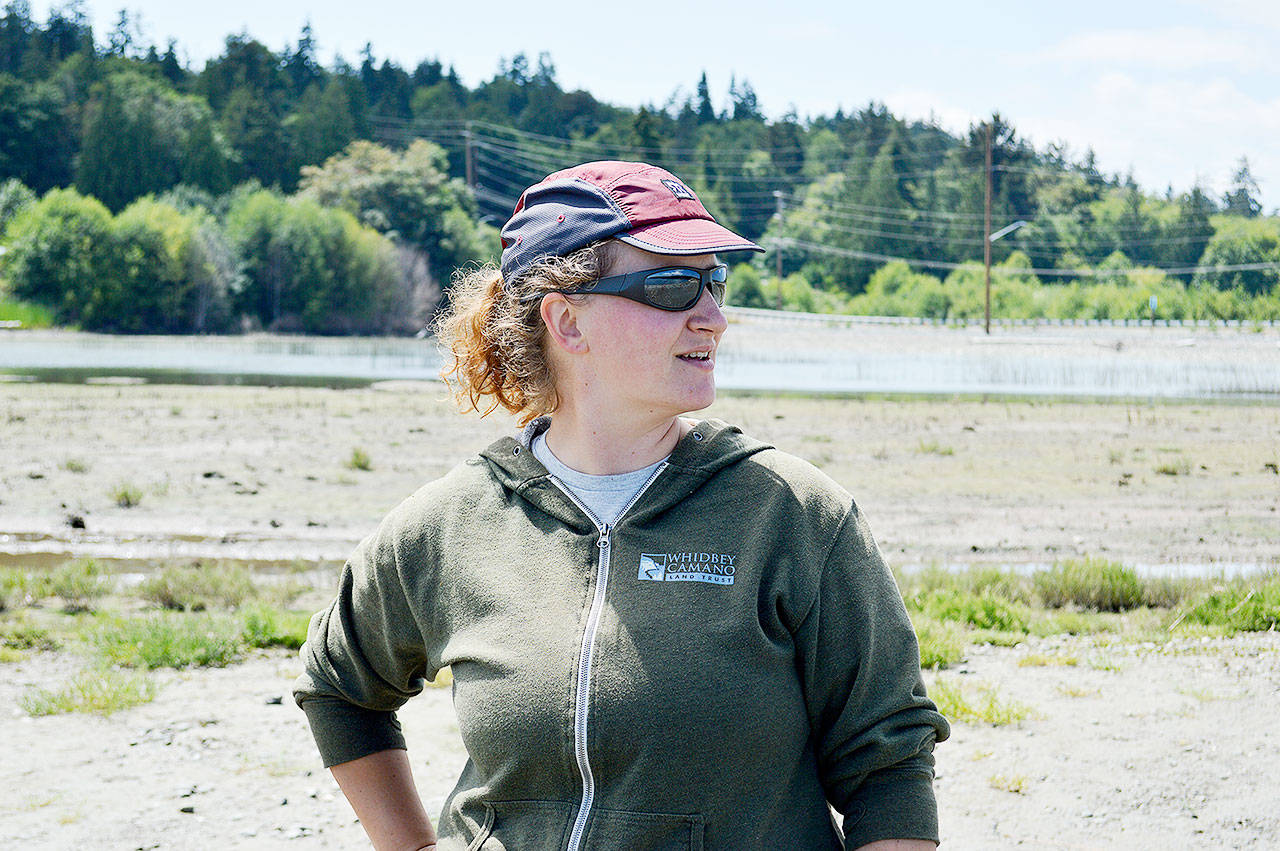Two years can make a world of difference — especially for young salmon and birds looking for new habitat.
“Make it and they’ll come,” Jessica Larson, land steward with the Whidbey Camano Land Trust, said with a laugh.
She stood on the remnants of a 100-year-old farm dike looking at the saltwater marsh created by a 2016 joint project with the land trust and Washington State Department of Transportation.
The marsh, or “pocket estuary” was made by an intentional breach of the dike to let water into the old farm fields and restore important salmon habitat.
“These pocket estuaries are a really big, important function our island can have,” Larson said. “In essence, they’re a nursery where baby salmon can grow and get bigger.”
Last summer, researchers from Skagit River System Cooperative took samples between April and July and found over 2,000 juvenile chum and 29 juvenile Chinook salmon in the restored estuary.
The land trust acquired the property east of Dike Road in 2007 for the purpose of creating this type of habitat for salmon, Larson said. However, without funding the project was in limbo until 2016 when the DOT came looking for an environmental mitigation site to compensate for the loss of wetlands during a different project.
The agency raised Dike Road 14 feet higher and established another dike beneath it to protect farmers and land owners west of the road. State employees also cleared a hillside above the water of blackberries and replaced the bushes with native plants. As part of the project, the agency will maintain these plants for the next 10 years, Larson said.
As for the estuary, most of the restoration work started the instant the dike was breached and hasn’t stopped since.
“It’s a very fun restoration in that it is very hands-off,” Larson said. “The saltwater does a lot of the work for us.”
She said the saltwater kills most invasive species, clearing the way for native saltwater plants. The flow of the water is also naturally eroding what is left of the dike, which is an intended outcome of the initial breach. Larson said it is important that as the tide flows in and out that the opening doesn’t close itself.
“It will continue to change over the years,” she said.
More than just salmon and saltwater plants are benefiting from the new saltwater preserve. Bird counts performed by eBird have documented 146 bird species on the preserve and the land trust’s freshwater preserve on the other side of Dike Road.
“Dugualla Bay is a critical habitat, particularly for migratory shore birds,” said Joe Sheldon, who leads birding trips to the area with the Whidbey Audubon Society.
He said the mud flats that are naturally created by the estuary are where these birds feed. The creation of mud flats is important because 95 percent of the tidal wetlands where the animals used to feed has been lost in the Skagit River and Sammamish River area, he said.
Western Sandpipers, Dowitchers, Killdeer and Black-bellied Plovers are just a few example of the many species that are frequently seen in the area, he said.
“We’re very pleased that the Whidbey Camano Land Trust was able to obtain the easements on that property that allowed the work to be done,” Sheldon said.
“It’s a very important move for both salmon recovery as well as providing habitat for migratory shore birds.”



